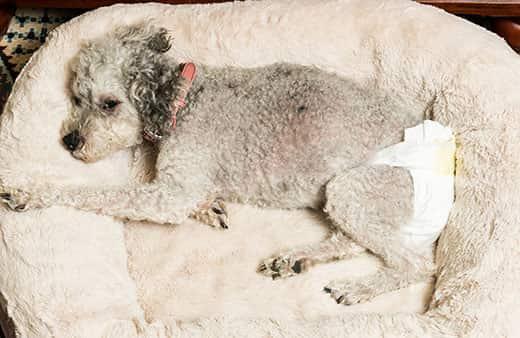
-
Find the right food for your petTake this quiz to see which food may be the best for your furry friend.Find the right food for your petTake this quiz to see which food may be the best for your furry friend.Health CategoryFeatured products
 Adult Salmon & Brown Rice Recipe Dog Food
Adult Salmon & Brown Rice Recipe Dog FoodSupports lean muscle and beautiful coat for adult dogs
Shop Now Adult 7+ Healthy Cuisine Roasted Chicken, Carrots & Spinach Stew Dog Food
Adult 7+ Healthy Cuisine Roasted Chicken, Carrots & Spinach Stew Dog FoodDelicious roasted chicken paired with tender vegetables in a succulent stew
Shop Now Perfect Weight & Joint Support Large Breed Chicken & Brown Rice Recipe Dog Food
Perfect Weight & Joint Support Large Breed Chicken & Brown Rice Recipe Dog FoodThis weight management and mobility support dog food was created with Hill’s unique understanding of the biology of overweight dogs
Shop NowFeatured products Adult Urinary Hairball Control Tender Chicken Dinner Cat Food
Adult Urinary Hairball Control Tender Chicken Dinner Cat FoodPrecisely balanced nutrition to support urinary health from kidney to bladder. With natural fibre technology to help reduce hairballs.
Shop Now Adult 11+ Indoor Chicken Recipe Cat Food
Adult 11+ Indoor Chicken Recipe Cat FoodSupports brain health and beautiful fur in mature indoor cats
Shop Now Adult Salmon & Brown Rice Recipe Cat Food
Adult Salmon & Brown Rice Recipe Cat FoodSupports lean muscle and beautiful fur for adult cats
Shop Now -
DogCat
- Cat Tips & Articles
-
Health Category
- Weight
- Skin & Food Sensitivities
- Urinary
- Digestive
- Kidney
- Dental
- Serious Illness
-
Life Stage
- Kitten Nutrition
- Adult Nutrition
Featured articles Water
WaterWater is the most important nutrient of all and essential for life. Animals can lose almost all their fat and half their protein and still survive, but if they lose 15% of their water, it will mean death.
Read More The Right Diet For Your Pet
The Right Diet For Your PetLearn what to look for in healthy pet food & nutrition, including ingredients, quality of the manufacturer, your pet's age, and any special needs they have.
Read More Pet Food Storage Tips
Pet Food Storage TipsWhere you store your cat and dog food can make a big difference in the quality and freshness once it is opened. Here are some common questions and recommendations for optimal storage for all of Hill’s dry and canned cat and dog food.
Read More -


If you're thinking of adopting a female dog, you may wonder if female dogs have periods, or if you live with one that isn't spayed you might be curious as to why she is bleeding. Female dogs do undergo a regular cycle and bleed once they reach maturity, if they are not spayed. The experience may seem frightening at first (and messy), but the better you understand it, the more you'll be able to help your dog.
Dogs in Heat and the Estrus Cycle
Do female dogs have periods? Well, yes, but they are a part of what is properly called an estrus cycle. You may have also heard of a dog as being "in heat" or "in season" during this time, and the estrus cycle is sometimes called a "heat cycle."
The first estrus cycle for dogs happens when the animal reaches puberty at around six months of age, though that number may vary between breeds and individual dogs. Smaller breeds tend to reach maturity earlier, while larger dogs might take more than a year to have their first heat.
The cycle often happens twice per year. The American Kennel Club (AKC) writes that some smaller breeds can go into heat up to four times per year, and extra-large dogs, such as St. Bernards or Great Danes, may only experience it every eighteen months. When a dog enters the cycle, it lasts for two to three weeks, though the actual amount of time differs for each individual dog. During this time, the vulva becomes red and swollen, a pink or clear discharge leaks out, and your dog will likely seem jittery and alert, notes the AKC.


Tasty Tips
Dealing with Discharge
Discharge also varies quite a lot and is not pure blood, notes PetWave. Some dogs may leave spots on the floor or dog bed, while for others the discharge will be barely noticeable. The cycle often starts with a heavier reddish discharge in the beginning, which fades to a yellow, pink, or watery spotting later on. Cleanup can be exasperating, and Canine Journal has even reviewed some doggy diapers for pups in heat. If you use diapers make sure to change them frequently and keep the skin clean and dry. Heavy bleeding or bleeding outside of a heat cycle is not normal. If your dog experiences it, you should call your veterinarian immediately.
While dogs are bleeding, they also urinate more frequently, says Daily Puppy. Some dogs will mark areas of their house or outdoors with their strong-smelling urine, known to attract their male counterparts and alert them of their mating status.
Since all of these symptoms can be startling or uncomfortable, some dogs can become grouchy or fretful while in heat. Pethelpful recommends showing your dog a little extra love and attention during this time. Keep an eye on her appetite and give her frequent baths to clean up any discharge. You should also be careful to keep her away from any male dogs who might turn aggressive and make sure she is securely on a leash or behind a fence when she's outside.
Questions to Ask Your Veterinarian
If you adopted a dog that wasn't spayed, this whole bleeding experience will probably be new for you. Make a list of any questions you have and visit your veterinarian to learn about how to best care for a dog in heat. If you aren't sure what questions to ask your vet, here are a few to get you started:
- At what age should I expect this particular dog to start having estrus cycles?
- What are some ways to keep up with her hygiene when she bleeds?
- What are your recommendations for cleaning up anything she might bleed or pee on?
- When is the right time to spay her?
The Importance of Spaying Your Pet
Are you ever planning on breeding your pet? If not, there's no reason why your dog needs to experience her estrus cycle. Pets that don't need to become pregnant should get surgically sterilized. The sterilization is called ovariohysterectomy, though it is most commonly referred to as spaying for female animals. The AKC points out the numerous benefits of spaying and neutering, including reduced health risks for your pup, gentler behavior for many dogs, and fewer homeless animals. A litter of roly-poly puppies may be cute, but the time and veterinary costs necessary to care for one is more than most pet parents realize if you're not used to breeding dogs. And there are many puppies in shelters that are already born and waiting to come home with you.
Also, be sure to talk to your vet about proper nutrition, pre- and post-surgery. After a dog gets spayed, her metabolism tends to slow down, so you might look for a food specially formulated for spayed and neutered pets. The right nutrition can play a pivotal role in recovery and overall health for your pup.
There's no need to wonder "Why is my dog bleeding?" if you can understand and prevent it. Knowing your pet's reproductive cycle will help you know what to expect if she goes into heat, and you'll know that spaying your new furry friend can prevent it from happening altogether.


Erin Ollila believes in the power of words and how a message can inform—and even transform—its intended audience. Her writing can be found all over the internet and in print, and includes interviews, ghostwriting, blog posts, and creative nonfiction. Erin is a geek for SEO and all things social media. She graduated from Fairfield University with an M.F.A. in Creative Writing. Reach out to her on Twitter @ReinventingErin or learn more about her at http://erinollila.com.
Related products

Supports lean muscle and beautiful coat for adult dogs

Gentle on stomachs while nourishing skin & supporting development in growing puppies

Delicious roasted chicken paired with tender vegetables in a succulent stew

This weight management and mobility support dog food was created with Hill’s unique understanding of the biology of overweight dogs
Related articles

A dog with a sensitive stomach has special needs. Learn more about sensitive stomach symptoms in your dog, what you can do to help sooth your pet’s insides and get recommendations on sensitive stomach dog food.

Though it may seem like your four-legged friend loves nothing more than to nap on the couch, dogs need regular exercise to stay healthy just like people do.

Learn what you can feed your pregnant or nursing dog to keep her and her new pups healthy.

Selecting the right food for your puppy is a key to quality nutrition and a long, healthy life., Learn more about how to select the right puppy food.

Put your dog on a diet without them knowing
Our low calorie formula helps you control your dog's weight. It's packed with high-quality protein for building lean muscles, and made with purposeful ingredients for a flavorful, nutritious meal. Clinically proven antioxidants, Vitamin C+E, help promote a healthy immune system.
Put your dog on a diet without them knowing
Our low calorie formula helps you control your dog's weight. It's packed with high-quality protein for building lean muscles, and made with purposeful ingredients for a flavorful, nutritious meal. Clinically proven antioxidants, Vitamin C+E, help promote a healthy immune system.


